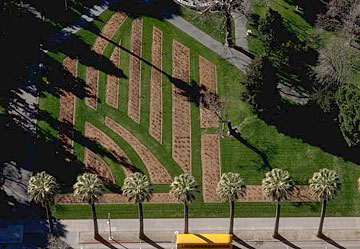Salinity Management Guide

Calculating your landscape's evapotranspiration, ETL
Once you determine the local reference evapotranspiration rate (ET0) and the appropriate plant adjustment factor or factors (KL) for your landscape, you can calculate the site's rate of evapotranspiration (ETL).
To do so, just use the equation mentioned earlier:
- A landscape plant's rate of evapotranspiration is equal to the local reference evapotranspiration multiplied by the appropriate plant adjustment factor
- Or, expressed with symbols: ETL = ET0 × KL
It is important to note that, in many cases, there will be a different landscape adjustment factor for each irrigation zone.
Example:
You want to estimate the rate of evapotranspiration of a mixed planting of holly oak, Twin Peaks coyote brush, and trailing lantana in a park in Los Angeles:
- By referring to the relevant tables, you find that the species factors for all three have been determined to be 0.2. Consequently, you assign a species factor of 0.2.
- Since the planting is full, making for a canopy cover of 100%, and there are three types of plants — a tree, a shrub, and a ground cover, you assign a high density factor of 1.2.
- The planting is exposed all day to the sun and not exposed to any unusual amount of wind, so you assign an average microclimate factor of 1.0.
- Multiplying the species factor 0.2 by the density factor of 1.2 by the microclimate factor of 1.0, you arrive at a landscape adjustment factor of 0.24.
- You find the normal-year average reference evapotranspiration for the month of July for Los Angeles is 6.5 inches.
- Multiplying the landscape adjustment factor of 0.24 by 6.5 inches, you arrive at a landscape evapotranspiration rate of 1.56 inches.
| « Previous page | Next page » |